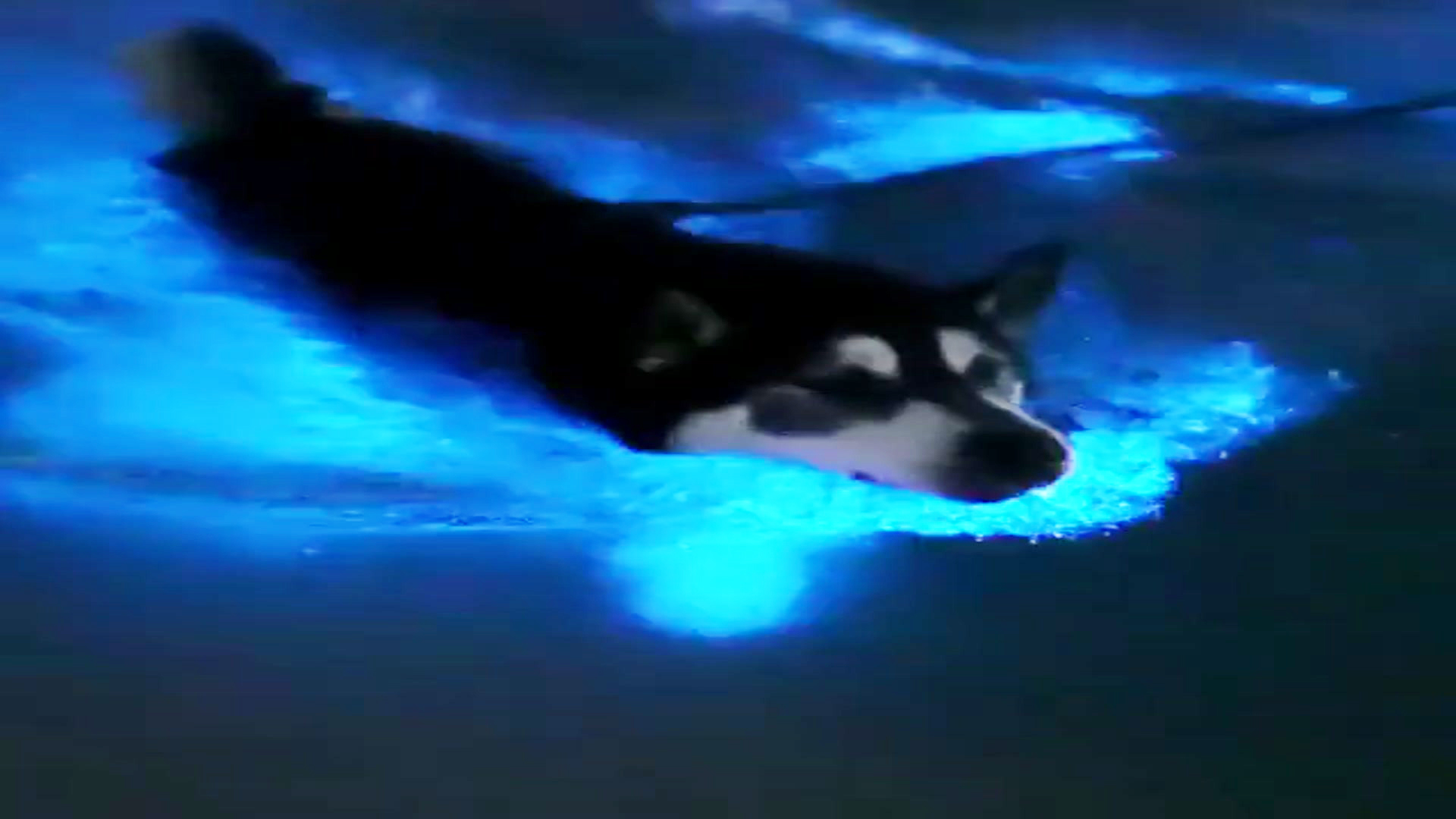If you've been to one of San Diego County's beaches over the last few nights, you may have noticed that bioluminescent waves are back.

San Diego hobbyist photographer Vishwas Lokesh recently captured photos and videos of the waves lighting up in neon blue and shared them with NBC 7. According to Lokesh, who has been documenting his sightings on Instagram, bioluminescence was visible from the sand since Saturday. Since then, he has witnessed the glow at several beaches, including Torrey Pines State Beach, North Ponto Beach and Carlsbad State Beach.
Get top local stories in San Diego delivered to you every morning. Sign up for NBC San Diego's News Headlines newsletter.
Here's what to know about the electric blue waves in San Diego:
More bioluminescence stories:
What causes bioluminescence?
Bioluminescence is caused by tiny organisms that drift in the ocean called Lingulodinium polyedra. They are a species of motile photosynthetic dinoflagellates.
"They're like plants in the sense that they photosynthesize, but they're unlike most plants in the fact that they move around a bunch. They can swim," Dr. Drew Lucas, an associate professor at Scripps Institution of Oceanography at UC San Diego who has researched the plankton species and their bioluminescent blooms, told NBC 7.
In fact, they swim so well for their size that Lucas has referred to them as the Michael Phelps of the plankton world. Their strong swimming abilities are the reason they are able to take over the coastal ecosystem, turning the water red during the day, hence the term red tide, and making it glow at night.
These organisms don't show off their glowing powers during the day. It's when nighttime rolls around, and they get physically disturbed — like from a breaking wave, a boat, a dolphin or a surfer — that they unleash their glow.
"That flash of light for each individual cell is not very bright, but when there's a lot of them in the water, that's when they really can light the waves up and lead to quite bright glowing," Lucas said.
When can you see bioluminescence in San Diego?
First things first, it needs to be dark to see bioluminescence. Lucas says the organisms do not glow if they encounter light.
The natural phenomenon can happen at almost any time of the year, Lucas explained. But he's noticed a slight preference for spring to early fall.
If you're at the beach when there's a red tide, and you can't stay until the sun goes down, Lucas shared a tip to see bioluminescence from the comfort of your home. When there's a red tide, fill up a jar with some red water and put it in your fridge for an hour, creating a dark environment. Once you take the jar out, shake it, and it will supposedly light up.
Where can you see bioluminescence in San Diego?
"It is patchy. It does move around unless it's a very strong event like the one in 2020 ... In that case, it was literally everywhere," Lucas said.
Because the red tide seems to move around, Lucas says the best way to know where to find the red tide is on social media.
How long does bioluminescence last?
The amount of time the red tides that cause bioluminescence lasts varies, but Lucas says they typically stick around for a couple of weeks.
"In 2020, the red tide was around for almost two months. Sometimes, it's only a night or two that is really bioluminescing at the beach," Lucas said.
If you plan to view the electric waves from the sand, the red tide must be in the breaking waves. Red tides that are offshore may be viewed from a boat.
Is it safe to swim in bioluminescent waters?
"It is my understanding that, in general, people tolerate swimming in the red tide just fine," said Lucas, who claims he has swam and surfed in it. "In a typical scenario, the bioluminescent red tide is not harmful to human health or even the ecosystem."
Red tides can impact the ecosystem at specific intensities. Interestingly, it doesn't have to do with the bloom but rather when the organisms start to die off.
"They start to decompose in the ocean, and that decomposition uses up all the oxygen, which can really harm marine life," he said. "There have been reports of it creating some amount of discomfort in people in terms of the smell and aerosols that are coming out of the water as the bloom is decaying."
Lucas' research on how Lingulodinium polyedra created a historic red tide and bioluminescence display in 2020 can be found here.



